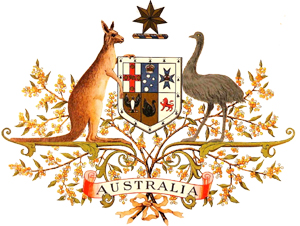[authors: Claire Gregg* and Martin O'Brien**]
 The Full Federal Court of Australia has handed down its long awaited decision in D'Arcy v Myriad Genetics Inc today, affirming that isolated DNA and RNA are patentable subject matter under Australian law.
The Full Federal Court of Australia has handed down its long awaited decision in D'Arcy v Myriad Genetics Inc today, affirming that isolated DNA and RNA are patentable subject matter under Australian law.
The first instance decision of Nicholas J was appealed to the Full Federal Court on the grounds that the earlier Federal Court decision erred in its conclusion that isolating a gene is sufficient to render it a manner of manufacture. We refer you to our article of 15 February 2013 for a more detailed discussion of the first instance Federal Court decision.
Under Australian law, s 18(1)(a) of the Patents Act 1990 requires that, in order to constitute patentable subject matter, the claimed invention must be 'a manner of manufacture within the meaning of section 6 of the Statute of Monopolies'. The meaning of 'manner of manufacture'was broadly construed by the High Court of Australia in National Research Development Corporation v Commissioner of Patents (NRDC), which held that a claim directed to a product found in nature may constitute a manner of manufacture provided that the claimed product involves an artificially created state of affairs and has utility in a field of economic significance.
In view of the principles laid down in NRDC, the Full Federal Court unanimously upheld the decision of Nicholas J, emphasizing that '[t]his case is not about the wisdom of the patent system. It is about the application of Australian patent law, as set out in the Act and as developed by the courts since the Statute of Monopolies'.
The Court went on to note that it is not the role of the courts to decide 'whether, for policy or moral or social reasons, patents for gene sequences should be excluded from patentability', re-iterating that the Australian Parliament has previously considered such questions and chosen not to exclude gene sequences from patentability.
The Court concluded that an isolated gene sequence is different to the gene as it exists in nature, with specific reference to the functional differences that arise as a result of isolation. The Court further rejected the view of the U.S. Supreme Court that Myriad's claims are concerned 'primarily with the information contained in the genetic sequence'. Rather, the Full Court emphasized that the claim in question 'is to a compound; a nucleic acid. It is not a claim to information'.
The Full Court's decision that the isolated nucleic acid in question has 'resulted in an artificially created state of affairs for economic benefit' and is therefore capable of defining patentable subject matter, has maintained the status quo in Australia in relation to the patentability of isolated gene sequences. However, the possibility of an application for Special Leave to Appeal to the High Court still exists, and thus it may be some time before this matter is finally put to rest in Australia.
The decision of the Full Federal Court of Australia can be found here.
* Dr. Gregg is a Patent Scientist with the Chemical / Life Sciences Team of Spruson & Ferguson in Sydney, Australia.
** Dr. O'Brien is a Principal / Patent Attorney with the Chemical / Life Sciences Team of Spruson & Ferguson in Sydney, Australia.